
About UsThe Numismatic Bibliomania Society is a non-profit organization promoting numismatic literature. For more information please see our web site at coinbooks.org SubscriptionsThose wishing to become new E-Sylum subscribers (or wishing to Unsubscribe) can go to the following web page link MembershipThere is a membership application available on the web site Membership Application To join, print the application and return it with your check to the address printed on the application. Membership is only $15 to addresses in the U.S., $20 for First Class mail, and $25 elsewhere. For those without web access, write to: David M. Sundman, Secretary/TreasurerNumismatic Bibliomania
Society AsylumFor Asylum mailing address changes and other membership questions, contact David at this email address: dsundman@LittletonCoin.com SubmissionsTo submit items for publication in The E-Sylum, just Reply to this message, or write to the Editor at this address: whomren@coinlibrary.com
BUY THE BOOK BEFORE THE COINYou won't regret it! |
- WAYNE'S WORDS: THE E-SYLUM APRIL 17, 2011
- READER FEEDBACK ON THE E-SYLUM IPHONE APP
- BOOKBINDER ALLAN GRACE HAS PASSED
- KOLBE & FANNING NUMISMATIC BOOKSELLERS UPCOMING SALES IN 2011, 2012
- NEW BOOK: CATALOGUE OF THE JAPANESE COIN COLLECTION AT THE BRITISH MUSEUM
- BOOK REVIEW: A GUIDE BOOK OF UNITED STATES COINS, 2012
- WHITMAN PUBLISHING AUTHORS TO GATHER IN ATLANTA MAY 2011
- ANA LIBRARY REVAMPS CATALOG WITH NEW, IMPROVED FEATURES
- THE AMERICAN NUMISMATIC ASSOCIATION'S YOUTUBE VIDEOS
- JOHN E. BULL, 1844-1923
- THE CANADIAN ANTIQUARIAN AND NUMISMATIC JOURNAL
- CANADIAN NUMISMATIC REFERENCES FOR SALE
- ON MR. 880 AND MARK SURRENCY'S COUNTERFEITS CLASS
- MORE ON THE RATS OF TOBRUK MEDAL
- QUERY: PLANTERS NUT & CHOCOLATE COMPANY TOKEN INFORMATION SOUGHT
- NOTES FROM E-SYLUM READERS: APRIL 17, 2011
- A CIVIL WAR MEDAL OF HONOR AND CERTIFICATE
- WOULD A HALFWAY COUNTERFEITER GET HALF THE PRISON SENTENCE?
- STATUE OF LIBERTY STAMP SNAFU
- FEATURED WEB SITE: CIVIL WAR TOKEN SOCIETY
WAYNE'S WORDS: THE E-SYLUM APRIL 17, 2011

Among our new subscribers this week are Roger Lovett, Dale Exander, and Rex Magnuson. Welcome aboard! We now have 1,416 email subscribers, plus 130 followers on Facebook, including Jeremy Bostwick and Ian Fenn.
I couldn't resist the urge to ask Roger if he was somehow related to THE Lovetts. He writes:
As far as Lovett relations go, I'm not related to the famous Lovett engraving family. I talked to Katherine Jaeger a couple of years back when she was doing research on that family & gave her my ancestry from the coming over in the 1830's--no luck. I do have Lovett tokens & Confederate Cent Bashlow restrikes, plus the H. Levi, G. Corell book on the Lovett family/Confederate cent.
This week we open with reader feedback on the E-Sylum iPhone app and word of the loss of numismatic bookbinder Allan Grace. Next is information about upcoming Kolbe & Fanning literature sales, a new book announcement, and a review of the latest edition of the Red Book.
Other topics include the ANA Library, numismatist John Bull, and the Civil War Token Society. To learn more about the Planters Nut & Chocolate Company tokens and the Statue of Liberty stamp snafu, read on. Have a great week, everyone!
Wayne Homren
Numismatic Bibliomania Society
Reader Feedback on The E-Sylum iPhone App
 Dick Doty of the Smithsonian Institution writes:
Dick Doty of the Smithsonian Institution writes:
Why on earth would I want to read something on my phone? I'm blind enough as it is, from reading small print.
Megan Fenselau of the American Numismatic Society writes:
I had no problems downloading or using the Coin Mania app. It looks great. Obviously there is only one issue up right now, but as more issues come out, will the list of links just get longer or will the old headlines go away, replaced by new ones? On my RSS feeds I am able to delete an article out of the feed once I've read it, but this of course is a little different.
This is definitely very cool. Let me know what company you used, we might try something similar for the ANS E-news someday soon.
The RSS feed is recreated fresh with each new issue, so the old links will go away. If they didn't, the list would get awfully long and might slow down the app or freeze your phone. But there IS a complete list of all E-Sylum article headlines on our web site at the below location. It's automatically updated each week at the same time the RSS feed is created. When technology works, it's a wonderful thing - it's like having a staff of robot worker bees to do the work.
To view the complete article list, see: E-Sylum Complete Table of Contents (www.coinbooks.org/esylum_toc.html)
Here's the description of the app on the Apple iTunes site:
The E-Sylum is like a cocktail party attended by many of the top coin collectors and dealers around the U.S. and the world. Get the facts from people in the know about numismatics: coins, medals, tokens and paper money from ancient times to today. Get reviews of the latest numismatic books and read about the latest discoveries as they happen.
Vote for The E-Sylum app here: itunes.apple.com/us/app/coin-mania-the-e-sylum/id429614467
Bookbinder Allan Grace Has Passed
On Friday Charlie Davis wrote:
I just heard from Sam Ellenport at the Harcourt Bindery that Allan Grace passed away quite suddenly. His wife Maureen had called Sam to ask him to complete any work they had unfinished
Allan Grace was a talented bookbinder who became known in the U.S. numismatic world through bibliophile Armand Champa. I met Allan at "The Invasion of Louisville". Armand had found Allan in England and encouraged him to make a move to the U.S. Many of the books in Armand's numismatic library had been bound (or rebound) by Allan. Charlie furnished the image below of Allan and his wife Maureen taken about 1988. Can any E-Sylum readers provide more information on Alan Grace and his work?

Kolbe & Fanning Numismatic Booksellers upcoming sales in 2011, 2012
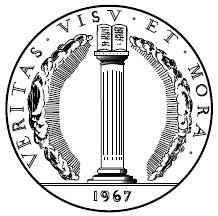 Kolbe & Fanning Numismatic Booksellers are pleased to announce their 121st mail bid, telephone and email sale, closing on June 2, 2011. It is one of the firm's largest and most diverse sale offerings in years. The 128-page, 1576-lot catalogue comprises a rather remarkable selection of interesting and elusive works on ancient, medieval and modern numismatics.
Kolbe & Fanning Numismatic Booksellers are pleased to announce their 121st mail bid, telephone and email sale, closing on June 2, 2011. It is one of the firm's largest and most diverse sale offerings in years. The 128-page, 1576-lot catalogue comprises a rather remarkable selection of interesting and elusive works on ancient, medieval and modern numismatics.
The sale starts off with Part 2 of the Alan Luedeking library, comprising over 700 lots, rich in rare and unusual works on Latin American numismatics. It is followed by nearly 200 lots from the Dr. Ira Rezak library, featuring a number of seldom-seen works on Russian coins and medals. The remaining 650 lots, the property of well over a dozen consignors, cover the numismatic spectrum. Many rare and unusual books, sale catalogues and ephemeral items on American numismatic topics are featured in this second half of the catalogue.
Sale highlights include:
- Long runs or sets of a number of twentieth-century American and European auction sale catalogues featuring foreign coins and medals, especially those of Latin America, many of which are rarely offered
- A dozen different works by Humberto Burzio
- Twenty titles by Jorge Ferrari
- Ray Byrne's photographic archives
- The first work, published in 1760, to depict an Admiral Vernon medal
- Several original Medina works, including Medallas de Proclamaciones and Monedas Coloniales Hispano-Americanas
- Group lots, organized into categories, of seldom-offered pamphlets and specialized monographs on various Latin American numismatic topics
- Rosa's 1904 Numismatica: Independencia de América
- Runs or sets of obscure and often quite rare Latin American numismatic periodicals
- The fabled 1908 catalogue of the Gonzalez collection of Chilean coins
- Ira Rezak's research files on Russian numismatics
- An 1850 edition of Eckfeldt and Du Bois with gold samples
- Thomas Elder's famous 1929 George Alfred Lawrence sale with all 22 original photographic plates
- Wayte Raymond's exceptional deluxe copy of Snowden's 1861 work on Washington medals
- A nice Würtzbach album of photographs of Massachusetts colonial silver coins, signed by the author
- A pleasing original 1905 Rhousopoulos auction catalogue, along with a number of other plated Jacob Hirsch sales featuring superb ancient coins
- Walter Breen's extensively annotated copy of Bowers' 1979 History of United States Coinage
- Two nice original 1875 Crosbys on American colonial coins
- The best 1743 edition of Vaillant's Numismata Imperatorum Romanorum
- John G. Mills's plated, priced and named 1870 John Allan Silver Cabinet; also Isaac Wood's plated and priced copy
- A plated 1883 Newlin on half dimes from the Harry Bass library
- Kenneth Lee's "Super-Deluxe" edition copy Number One of his 1979 work on fractional California gold coins, one of only two accompanied by a custom slipcase
- Kenneth Lee's unique annotated working copy of his 1979 work
- A number of early edition Red Books, including a set
- A bound volume of fifteen thick-paper, priced W. Elliot Woodward sale catalogues, 1879–85, with a number of rare archeological sales
- A complete set of Lester Merkin auction catalogues
- An extensive run of 97 complete volumes of The Numismatic Chronicle, 1881–2004, mostly bound and generally in fine condition
- The first auction catalogue to employ Sheldon grading and values
- Lyman Low's first coin envelope
- A 1910 Thomas Elder sale Confederate Half Dollar illustration unrecorded in Adams, the second known
- A 1863 San Francisco Mint document recording the employment and monthly wage of Bret Hart, signed by the Superintendent
- Over eighty American auction sales not recorded in Gengerke, featuring a long run of early Chicago Coin Club sales
- A fine 1884 Adolph Weyl illustration of a genuine 1804 silver dollar
A printed catalogue may be obtained by sending $10 to: KOLBE & FANNING NUMISMATIC BOOKSELLERS LLC, 141 W JOHNSTOWN ROAD, GAHANNA OH 43230-2700. The catalogue is also accessible free of charge on the Kolbe & Fanning website at www.numislit.com.
On January 7, 2012, Kolbe & Fanning will be holding a public auction at the Waldorf-Astoria hotel in conjunction with the New York International Numismatic Convention. Consignments of exceptional numismatic works are now being accepted. Inquiries may be directed to David F. Fanning at df@numislit.com, (614) 414-0855, or to George F. Kolbe at gfk@numislit.com, (909) 338-6527.
The firm's January 8, 2011 New York sale at the Waldorf Astoria was a remarkable success. A few sale highlights follow. Babelon's Traité des Monnaies Grecques et Romaines sold for $23,000 on a $5,000 estimate and the de Morgan Continuation brought $7,475. A superb set of the famous 1791 Beskrivelse over Danske Mynter og Medailler was estimated to bring $7,500 but sold for $13,800. The fine selection of pre-revolutionary works on Russian coins and medals sold extremely well, bringing close to three times the estimates, and was highlighted by a handsome set of the 1916 French edition of Georges Michaïlovitch's Monnaies de l'Empire de Russie, which realized $25,300. The 1875 Crosby family copy of The Early Coins of America, in a deluxe Nova Constellation three-quarter morocco binding was hotly contested for, realizing $34,500 on a $12,500 estimate. Kenyon Painter's plated 1920 Thomas Elder sale of the Henry C. Miller Collection was estimated to bring $2,500 but sold for $8,625.
New Book: Catalogue of the Japanese Coin Collection at the British Museum
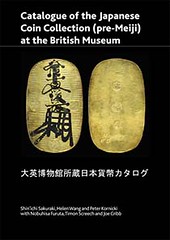 The British Museum's collection of Japanese coins is one of the best outside Japan. Many of the coins were originally in the collection of Japan's renowned numismatist and collector, Kutsuki Masatsuna (1750–1802), and were acquired by the British Museum in the 1880s. At the same time as Kutsuki Masatsuna was building up his collection in the 18th century, European scholars were also visiting Japan, and paying particular attention to coins and botany as they sought to gain knowledge and understanding.
The British Museum's collection of Japanese coins is one of the best outside Japan. Many of the coins were originally in the collection of Japan's renowned numismatist and collector, Kutsuki Masatsuna (1750–1802), and were acquired by the British Museum in the 1880s. At the same time as Kutsuki Masatsuna was building up his collection in the 18th century, European scholars were also visiting Japan, and paying particular attention to coins and botany as they sought to gain knowledge and understanding.
Catalogue of the Japanese Coin Collection (pre-Meiji) at the British Museum, with special reference to Kutsuki Masatsuna, by Shin'ichi Sakuraki, Helen Wang, Peter Kornicki, Nobuhisa Furura, Timon Screech and Joe Cribb. British Museum Research Publication 174; ISBN: 9780861591749; Number of pages: 224 pages; Size: 297 x 210mm; Illustrations: 86 colour plates. £40.00 + postage.
This is the first catalogue of the British Museum's collection of Japanese coins. Details of each coin are given, along with colour illustrations.
Contents
- Foreword: Joe Cribb
- A History of the Japanese Coin Collection at the British Museum – Helen Wang
- How did Kutsuki Masatsuna's Coins Come to the British Museum – Helen Wang
- A Brief History of Pre-modern Japanese Coinage – Shin'ichi Sakuraki
- European Interest in Japanese Coins before 1853 – Peter Kornicki
- Kutsuki Masatsuna: a Life – Timon Screech
- Kutsuki Masatsuna as Collector and Numismatist – Shin'ichi Sakuraki and Nobuhisa Furuta
- The Japanese Coin Collection (pre-Meiji) at the British Museum – Shin'ichi Sakuraki and Nobuhisa Furuta
- Sources of the Coins
- Dates and Places of Production
- Catalogue
- Plates
The authors
Shin'ichi Sakuraki (Shimonoseki City University); Helen Wang (British Museum), Peter Kornicki (University of Cambridge), Nobuhisa Furuta (Institute for Oriental Currency), Timon Screech (SOAS, University of London), Joe Cribb (British Museum).
If you want to order the book, click here: www.britishmuseumshoponline.org/invt/cmc0861591749/?stylecat=bookshop
To read the complete article, see: British Museum publishes Catalogue of its Japanese Coin Collection (www.coinsweekly.com/en/News/4?&id=537)
Book Review: A Guide Book Of United States Coins, 2012
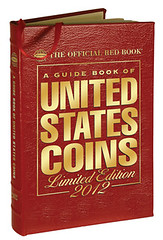 A Guide Book Of United States Coins, R. S. Yeoman, Edited by Kenneth Bressett, Research Editor Q. David Bowers, Valuations Editor Jeff Garrett, The Official Red Book 65th Anniversary Edition – 2012, Whitman Publishing, LLC, Reviewed by John and Nancy Wilson, NLG
A Guide Book Of United States Coins, R. S. Yeoman, Edited by Kenneth Bressett, Research Editor Q. David Bowers, Valuations Editor Jeff Garrett, The Official Red Book 65th Anniversary Edition – 2012, Whitman Publishing, LLC, Reviewed by John and Nancy Wilson, NLG
It is hard to believe that the official red book, A Guide Book of United States Coins by R. S. Yeoman and edited by Kenneth Bressett is in its 65th year. Since the early-1950s for Nancy and 1968 for John the Red Book has been our number one source for finding out information and prices on our nation's coinage. Anyone who talks to us about what their coin is worth is quickly directed to the Red Book. If no coin or book dealer is available we direct them to a national book chain seller like Books-A-Million. They, as well as many other book dealers, will have a hobby section which will have the Red Book for sale. Probably more people have become interested in coin collecting because of the Red Book than any other coin publication ever produced. The 432 page reference has over 1,800 full-color photographs, and pricing for more than 6,000 coins, and 33,000 individual coins in up to nine grades per series. Over 140 professional coin dealers, scholars and other experts contributed to the prices in this 65th edition.
Though this 2012 edition brings to us only one more page then last year's, it has some great new features. Two of the most important features were going to $43 per ounce for silver and $1,875 for gold. With the prices for precious metals constantly changing these new higher prices will help you better know the value of your silver and gold coins. For some great information go to Appendix D and review the Top 250 Auction Prices for U. S. coins. It is interesting how many coins which sold ten or even twenty years ago still are on the list. Valuations Editor Jeff Garrett says that prices jumped more than $17,000 over the last edition, and a total of 42 coins broke the million mark. The bullion section now includes more photos and information for the mints more recent issues which include the America the Beautiful five-ounce silver bullion coins, and the first spouse coins in both gold, and proof platinum. All the circulating coins and commemoratives issues and prices have also been updated.
In press releases from Whitman, the editor's comment on the current state of the market, is "rare coins in exceptional condition continue to hold or increase in value." He finishes his comments with, "overall, there seem to be bargains to be had throughout the entire range of American coins now that prices have receded a bit from the overheated market of recent years." Quoting Jeff Garrett, "Important, high quality coins continue to bring record amounts. Increased bullion prices have lifted the value of common, low-grade issues, but in general coins with average eye appeal have softened slightly due to the weak economy. While many collectors and investors focus on bullion, rare coins offer tremendous value at today's prices." Q. David Bowers says, "the book's continuing popularity (more than 22 million copies have been sold since 1946), has continued even in the internet age." The Red Book remains solidly the collector's best and first choice for instant information.
The continued pricing of the pre-Federal issues (colonial and post-colonial coins and tokens as well as continental dollars and other early contract issues and patterns) in good and very good condition have continued in this edition as beginning collectors find the prices in these grades are affordable and a good starting point. According to more published information collectors of high-grade coins and rarities can look at the coin charts that have new listings this year on the continental dollar, large cents, several draped bust and liberty seated series, and liberty head and Saint-Gaudens double eagles.
As collectors of the overprinted red books, the prices in this section have been updated to include the 2011 Boston Numismatic Society special edition which is currently priced at $100. The glossary will help collectors and probably some dealers know the special words that are used to describe a coin such as, mule – a coin struck from two dies not intended to be used together. The well laid out bibliography has 129 listings covering just about every coin series. The index is always useful and will help you to immediately find the information you need regarding coins and other information in the book. On the minus side, Whitman publisher Dennis Tucker, says that the type-coin value charts at the front of each denomination were removed from this edition because they are now covered in the professional edition red book. Most people who buy this edition do not also buy the professional edition. All the other great information contained in the 65th Edition makes up greatly for this eliminated information. This edition, as well all all past issues of the red book, continue to be the super heavy weight champion of all coin books sold annually in this country.
The Red Book covers the history of colonial and early American coins; official federal issues from half cents through silver dollars and gold coins; classic and modern commemoratives; Proof and Mint sets; error coins; Civil War tokens; pioneer (territorial) gold; every state and territorial quarter, plus the new National Park quarters; all of the presidential dollars; and more. You'll benefit from its practical essays on grading, investing, auctions, and other hobby subjects.
The 65th Edition comes in five different sizes and prices and lists from $14.95 for the spiral bound to $69.95 for the leather-bound limited edition (1,000 copies). The 2012 Red Book – Hard Cover is $16.95, and you get a free clear-plastic dust jacket while supplies last. For information on purchasing any one of these editions you can contact the publishers at: Whitman Publishing, LLC, 3103 Clairmont Rd., Suite B, Atlanta, GA. 30329 or visit their web page, www.whitmanbooks.com or call, (800) 546-2995.
Whitman Publishing Authors To Gather in Atlanta May 2011
Kenneth Bressett, Q. David Bowers, and Jeff Garrett will meet in an editorial summit at the offices of Whitman Publishing in Atlanta, Georgia, on May 9 and 10, 2011. The purpose of their two-day conference is to review several key numismatic publications and to plan for future editions.
Among the books to be discussed are the Guide Book of United States Coins (the "Red Book"), the Handbook of United States Coins (the "Blue Book"), the Professional Edition Red Book, Grading Coins by Photographs, and the Official ANA Grading Standards for United States Coins.
Bressett is the senior editor of the Red Book, having worked on the publication in various capacities since 1959. Bowers serves as the Red Book's research editor, and Garrett as its valuations editor. The three numismatists have written or edited dozens of Whitman Publishing books in recent years, including Money of the Bible and Milestone Coins (Bressett), The Expert's Guide to Collecting and Investing in Rare Coins and the Whitman Encyclopedia of U.S. Paper Money (Bowers), and 100 Greatest U.S. Coins and the Encyclopedia of U.S. Gold Coins (Garrett).
"Bressett, Bowers, and Garrett bring more than 150 years of combined numismatic experience to Whitman's publications," said Whitman publisher Dennis Tucker. "Each is well-known as an expert within the hobby community, and each is active on the forefront of modern numismatic research and developments."
The team, in conjunction with Whitman editorial staff, will review new features of the online system used by more than 100 contributors to submit pricing for the Red Book and Blue Book. They will also consider recommendations for numismatic content in future editions. They will review advance pages of the new Cherrypickers' Guide (to be published in fall 2011), as well as other ongoing projects and future releases.
"Coin grading is a dynamic activity with its own unique developments," said Bressett. "This is one of the most important areas where Whitman can help educate both new and experienced collectors. We will examine current trends of grading in the hobby and their relation to coin values."
Bowers noted, "Whitman receives hundreds of letters, emails, and comments from collectors nationwide, offering additions and ideas for the company's books. We'll be looking at these ideas and recommending action as our committee deems proper."
"Accuracy and timeliness are crucial in pricing the rare-coin market," said Garrett. "With a top-notch technical staff, Whitman has provided the tools for contributors and editors to compile the most up-to-date pricing information. The Atlanta summit will strengthen our techniques and strategies for the future."
THE BOOK BAZARRE
ANA Library revamps catalog with new, improved features
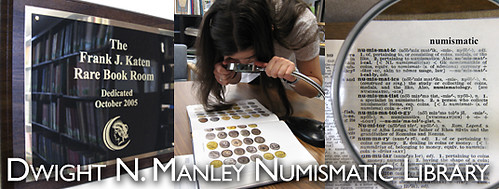
The American Numismatic Association Dwight N. Manley Numismatic Library recently re-launched its online catalog with features that will improve the library experience for hobbyists and researchers.
ANA members now can use the online catalog to sign up for library accounts, request materials, place items on hold, and rate and review library materials. The online catalog can be accessed from the library pages on www.money.org (select "Library" from the "Explore the World of Money" tab).
"The ANA Library staff is always looking for ways to make using the library easier and more convenient," ANA Library Director RyAnne Scott said.
Visit the ANA's YouTube channel at www.youtube.com/AmericanNumismatic to view two videos about the catalog: one explains how to set up a library account; the other demonstrates new library catalog features.
As the videos detail, signing up for an online library account is a simple process. Once registered, members can log in and begin searching the online catalog right away. Members will need to call the library to place a credit card on their account, as all outgoing postage costs are charged to the card. After that, whenever members request books directly from the online catalog, the materials will be shipped out within two business days.
"Now, members can order books at any time of day. It's as easy as clicking the ‘request item' button for an individual item," Scott said. "If the book they want is checked out, they can reserve the next available copy by pressing the ‘hold' button."
Other new catalog features include:
- Save searches in order to quickly access them later;
- Rate library materials from one to five stars and see the average user rating;
- Leave a personal review of the book you've just read.
If you have any questions about the ANA Library or using the online catalog, please call Library Assistant Manager Amanda Harvey at 719-482-9821 or Library Director RyAnne Scott at 719-482-9867. The ANA Library is open from 10:30 a.m. to 5 p.m. Tuesdays through Saturdays (MST).
To visit the ANA web site, see: www.money.org
To the ANA's YouTube channel, see:www.youtube.com/AmericanNumismatic
The American Numismatic Association's YouTube Videos
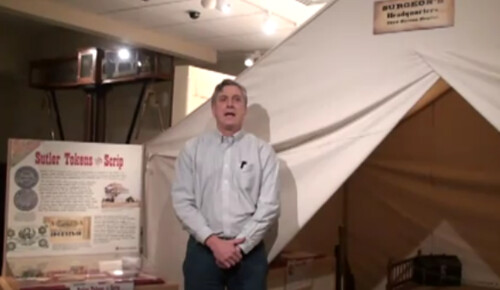
I viewed for the first time this week a new American Numismatic Association vehicle for reaching out to the public. The association has 14 videos on YouTube.
A couple are on the ANA library -- its catalog and how to borrow books -- and a couple were filmed at recent coin shows. However, there are five new videos that are timely, brief and challenging, encouraging viewers to take part in a Civil War scavenger hunt.
The association has conscripted officers and staff members to host one-minute videos. Current theme is the Civil War on its Sesquicentennial, tie-ing in with an obvious exhibit and filmed in the association's exhibit hall. First one was hosted by executive director Larry Shepherd, with others by curator Doug Mudd, past president Ken Bressett, librarian Ryan Scott, and educational director Rod Gillis-- all filmed just a few days apart.
The Civil War scavenger hunt is an attempt to attract perhaps non collectors into acquiring numismatic specimens. The first "clues" reveal some coins that can be drawn from circulation. It's a game and there are some prizes at the end of the series.
The videos exhibit the multimedia that many organizations are currently turning to for reaching tech savvy prospects. There is some creativity exhibited here, both in concept and context. For this the association should be praised and the participants be applauded.
Take a minute -- literally! -- to sample one of the five new videos. Your choice. Click on: Clue #2 - 2011 National Coin Week Civil War Scavenger Hunt (www.youtube.com/watch?v=12M4a-Sb1SU&NR=1)
THE BOOK BAZARRE
John E. Bull, 1844-1923
Kay Olson Freeman writes:
John E. Bull born July 1844, Connecticut - died 1922, Connecticut. He served in the Civil War from Aug. 29, 1862 to Sept. 30, 1863, as a private, Co. B, CT 24th infantry. When he enlisted, Bull was age 19, a farmer, unmarried.
In 1870 US Census, John and his older brother are "joiners" in West Meriden, CT. By 1880, John E. Bull has married, had a son and his wife has died. (John does not remarry.) He, his son, and his brother, have moved back to their original home in Essex, CT. They live with their parents (father a farmer). John E. Bull and his brother will work making ivory piano keyboards in piano factory for rest of lives. The Cheney Co. (George A. Cheney and Samuel M. Comstock) was a well-known piano manufacturer in the town. J.E. Bull's son will work in the piano factory as well.
The Bulls are an old New England family and John E. Bull seems to have had an interest in genealogy. John's son was William C. Bull (born Dec. 1872, CT - died Oct. 6, 1959,CT) who did marry Helen S. Pratt (d.1953,CT); but had no children. One genealogy says John left family papers to son, William. John E. Bull's brother, David Clarke Bull, did not marry and they always live together.
Centerbrook, and Ivoryton are towns very near Essex, Middlesex County, CT. That town is key to finding "J.E. Bull" because there are many others by that name elsewhere. I have no information on his collecting.
John Lupia writes:
I am not certain what became of John E. Bull's coin collection, but I suspect part of it was donated to the Museum of Connecticut History, part of the Connecticut State Library, that does have his manuscript on genealogy. I already checked the Connecticut Historical Society, and no coins were donated or bequeathed. Included in my response to you is the biographical data on him in my database of numismatic biographies.
Bull, John E. (1844-1923), 228 Main Street, East Part of the Village Centre Brook, Town of Essex, Middlesex County, Connecticut. He was born in July 1844 in his maternal grandfather's David Clark's (b. 1764) farmhouse in Say Brook, Middlesex County, Connecticut, the eldest of four sons of John A. (b. 1812) and Maria M. [nee Clark] Bull (b. 1825).
On July 1, 1863, during the Civil War he enlisted in the Connecticut Volunteers, 24th Regiment Company B, and served as a private. In the Department of Connecticut Grand Army of the Republic he was the commander at Mather Post, Deep River.
In 1870 he and his brother David Clark Bull (b. 1848) left the family farm to work in West Meriden, Connecticut, as joiners. They returned to their parent's farm at Centre Brook, and lived there the rest of their lives working in the village's piano and organ key factory, known locally as the Ivory Works. In 1878 he was an officer in the local Masonic Hall, and, in 1884, an officer of the Grand Royal Arch Chapter of Connecticut. He was an avid numismatist and genealogist and wrote : Family History and Genealogy of John Clarke and His Descendants (Manuscript in the Connecticut State Library). The Connecticut State Archives contain his "John E. Bull correspondence and genealogical notes 1887-1923. He was also a donor to the Connecticut Historical Society in 1911.
Numismatist and collector who owned a vast New Jersey state coinage collection some of which he purchased from Dr. Edward Maris. He was a buyer of United States colonial coinages at the Parmelee sale. His subscription to Mason's Coin Collectors' Herald was paid in 1881. Noted numismatists including Ebenezer Locke Mason, Jr., Charles Steigerwalt and Dr. Edward Maris communicated with him about numismatics via mail correspondence and postcards. For example, as per Roger Moore, Maris corresponded with him by mail on July 7, 1883.
Bibliography :
The Connecticut Magazine, Vol. 5, No. 5, May (1899) : 295 Gnecchi, Ercole and Francesco, eds., Guida Numismatica 4th edition. (Milano : U. Hoepli, 1903. Edition) : 532, No. 5382.
Mason's Numismatic Herald, Vol. II, No. 4, March (1881) : 27d; Annual Report of the Connecticut Historical Society (1911) : 45 State of Connecticut, Register and Manual (Hartford, 1915) : 358
The Canadian Antiquarian and Numismatic Journal
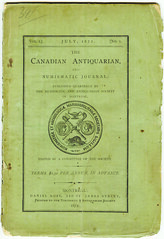 Before the Canadian Coin News and The Canadian Numismatic Journal, there was the Canadian Antiquarian and Numismatic Journal. Started in 1872, Canada's first numismatic periodical was published by Canada's first coin collectors' organization, The Numismatic and Antiquarian Society of Montreal.
Before the Canadian Coin News and The Canadian Numismatic Journal, there was the Canadian Antiquarian and Numismatic Journal. Started in 1872, Canada's first numismatic periodical was published by Canada's first coin collectors' organization, The Numismatic and Antiquarian Society of Montreal.
The Journal was the main vehicle for numismatic research in nineteenth century Canada. It was a forum for such well-known researchers as Adélard Boucher, Eugene Courteau, Alfred Sandham, and possibly the most prolific numismatic writer in Canadian history, R.W. McLachlan.
The society's history of numismatic research began even before its Journal. Boucher and Sandham were responsible for the first two numismatic references published in Canada. The Catalogue of the Silver and Copper Coins of Canada was released in 1863 by a committee chaired by Boucher, and Sandham published Coins, Tokens, and Medals of the Dominion of Canada in 1869.
From its founding, the Numismatic and Antiquarian Society of Montreal devoted itself to all aspects of history and historical collecting. This was reflected in its Journal's content. The first issue, illustrated here, had articles on American antiquities, ancient Jewish settlements in England, and a history of the Beaver Club of Montreal. Over the years, the Journal's focus drifted further away from numismatics, and articles began to find their way instead into a new publication: The Numismatist. Although it was published in the United States, The Numismatist welcomed articles about numismatics in Canada.
Because of financial shortfalls, the society stopped printing its Journal in 1886. But it was revived three years later with another "volume 1, number 1", but now referred to as Series 2. The Journal was printed off and on until 1933, when it ceased printing entirely.
For years the Canadian Antiquarian and Numismatic Journal was the lone periodical in Canadian numismatics. Another did not appear until 1938 when the Canadian Numismatic Art Society began publishing Money Talks.
Canadian Numismatic References For Sale
Valuable reference books for sale
The Canadian Numismatic Bibliography
Darryl A. Atchison, F.C.N.R.S. (Editor-in-Chief)
The Ultimate Book for the Collector of Canadian material. An absolute necessity for the collector who wants to know and understand his coins, tokens, medals or paper money. Over four hundred years of North American numismatic and economic history is covered in this monumental reference. Published in 2007. A limited number of sets still available. Over 1200 large format pages in two volumes containing references to books and significant articles, annotated in most cases, with introductory essays. It covers the entire range of works relating to Canada, the French Regime, Pre-Confederation Coinage, Decimal Coinage, Patterns, Newfoundland Coinage, Banks and Banknotes, Biographies, Artists, Engravers, Trade Tokens, Medals, Collectors, Collections, Auction Sales and Fixed Price Lists.
Price Can$225.00
Shipping & Handling to Canada Can$ 18.00
to the USA Can$ 25.00
Dictionary of Canadian Medalists
Robert C. Willey's Dictionary of Canadian Medalists, edited by Ronald Greene, is a useful reference for any collector of Canadian numismatica. It's a boon to collectors and a great starting point for researching the artists and makers of the country's coins, tokens, and medals.
The Dictionary was originally run serially in the Transactions of the Canadian Numismatic Research Society from 1978 to 1982. Bob Willey began writing an updated version in 1992, but he passed away before it could be completed. As a memorial to the popular numismatist, the Society decided to finish the update and issue it as an "occasional paper." Greene spent six years sorting through documents acquired from Bob Willey's estate. He received additional material from Ross Irwin, Jerome Remick, and other prominent members of the society. Noted numismatic auctioneer Jeffrey Hoare provided additional images to augment the article's original plates.
Willey's book provides information about designers and engravers, including lists of the medals, coins, and tokens created by them. The artists' years of birth and death are noted, when known, and minimal biographical data is provided. Listings include initials used by designers and manufacturers in signing their works. This can be useful in attributing an unidentified medal.
There is a wealth of information about many manufacturers that have produced medals and tokens. Histories of private mints, jewellers, silversmiths, and goldsmiths that have operated in Canada are detailed, along with those of foreign mints that have produced coins and medals for Canada.
Willey's Dictionary is particularly useful to the novice collector as it includes information on a number of different areas of study, for example Indian chiefs' medals, and blacksmith tokens.
Five hundred numbered copies were printed by the Canadian Numismatic Research Society in 1998. Collectors bought 350, including 50 with hardcover. Copies of the soft cover edition are available from Ron Greene P.O. Box 1351, Victoria BC V8W 2W7 ragreene@telus.net for $26.00 to Canadian addresses.
All Orders must be accompanied by full payment
Cheques payable to:
"Numismatic Education Society of Canada"
c/o Ronald Greene
P.O. Box 1351, Victoria BC Canada V8W 2W7
E-mail: ragreene@telus.net
Paul Petch adds:
The CNB (along with other books) is continuously offered by the J.D.Ferguson Historical Research Foundation on its web site at http://www.nunet.ca/jdfhrf/books.php. The Web site is still active: www.julaine.ca/canbiblio/
On Mr. 880 and Mark Surrency's Counterfeits Class
Fred Schwan writes:
Robert Neale writes:
Regarding Mark Surrency's 2002 class on counterfeits at ANA summer seminar, I recall as a participant and with amusement one little incident during class when someone, in talking about foreign counterfeits passed around a counterfeit large-size 1914 Lincoln $5 note. When the note got to Mark, sitting in the back near me, he quietly took the note and placed it in a folder with a blank look on his face as though he had never seen the note. Afterwards, he consulted with the owner, who according to Mark was supposed to turn in any such items, and I believe finally returned the note, saying simply, "Do the right thing." And I do not recall seeing the 880 note to which Ken refers. At least it's not in my notes.
Mark was really hung up on the possibility of someone in the class making off with one of his demo notes. At break time, he would lock the door once everyone was out and stay nearby or assign a "guard" from the class. I assume he was advised by his superiors to take extra care. One would have thought he had a bunch of gold bricks in the room. But I can say without reservation that the course was immensely interesting. Mark did a great job making his students aware of the nuances of many aspects of the subject from printing methods to "authentic counterfeits" to present day operations in other countries.
Joe Boling writes:
The Mr. 880 notes were shown in class the year I took it, but Mark may not have brought them out every year. As I recall, he taught three years. I took the course the first year it was offered, and he would not discuss the "supernote' counterfeits. The last year he brought some supernotes, and I was going to take the course again the next year so that I could have time to study them in detail - but he did not come back, and his boss, who never supported his teaching the course, did not appoint anyone else to take up the slack.
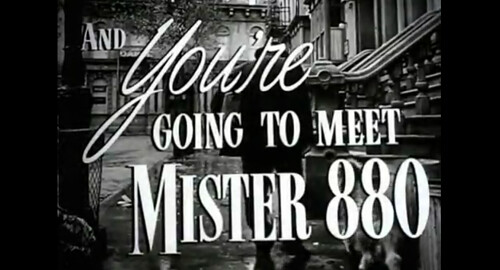
To view the YouTube video, see: MISTER 880 (www.youtube.com/watch?v=3Xk2oPkKuAI)
To read the earlier E-Sylum article, see: MORE ON COUNTERFEITER "MR. 800" (www.coinbooks.org/esylum_v14n15a09.html)
More on the Rats of Tobruk Medal

Dan Freidus replied:
Yes, this port in the east of Libya is apparently under rebel control now.
A tanker left the port of Tobruk on Wednesday carrying the first consignment of oil since the rebel government won recognition from some countries.
But the country's deputy foreign minister Khaled Kaim accused Britain of bombing Libya's biggest oil field at Al-Sarir in the southeast, notably damaging the pipeline linking Al Sarir and Tobruk, which is under rebel control.
To read the complete article, see:
Nato 'careful' over strikes, rebel oil leaves Tobruk
(www.emirates247.com/news/region/nato-careful-over-strikes
-rebel-oil-leaves-tobruk-2011-04-07-1.378224)
Dan Freidus adds:
The medal was supposedly cast from the fuselage of a German bomber they shot down (I wasn't familiar with the medal and just used Google but this site seems likely to be fairly reliable).
It was in the heat and dust of Tobruk that Australian tenacity and courage achieved its supreme expression. Air raids which had gone into the thousands before unofficial statisticians lost count had no more effect on members of the garrison than the enemy's artillery, strafing and attacks by tanks
The siege was only a couple of months old when the renegade Lord Haw Haw, broadcasting from Berlin, said they were "caught like rats in a trap" and applied it to the garrison because most of its men could find shelter only underground while the bombers were overhead. Our men accepted the title with relish. To one another, they were "the rats." To the Axis they were rats with razor-sharp teeth. They became "The Rats of Tobruk"
To read the complete article, see: Defence of Tobruk (www.army.gov.au/11_28rwar/History.asp)
Finally, Dan adds:
Here is the 1977 medal, not a restrike or copy but a completely different issue.
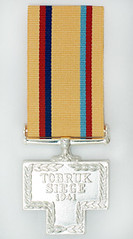 The Tobruk Siege Medal known as the "T" medal was issued to Australian, British, Indian, New Zealand & Polish troops who were in action during the Siege of Tobruk between April & December 1941.
The Tobruk Siege Medal known as the "T" medal was issued to Australian, British, Indian, New Zealand & Polish troops who were in action during the Siege of Tobruk between April & December 1941.
The Tobruk Siege Medal is an unofficial award issued by the "Rats of Tobruk" Association in 1977.
To read the complete article see: (www.medalsofservice.com.au/product_info.php?products_id=923)
Fred Schwan writes:
I really liked the information on the Rats of Tobruk. I tried to figure out the text on the reverse. The number at the top (254) is likely a serial number, but the T.X. 813 and Bingham F. P. are much more difficult. Bingham sounds like a place but could be a person. Possibly the meanings are obvious to an Australian collector. So much for resolving an unsolved mystery. Possibly Damien Lewis who submitted the image and had a relative who was a rat knows some of this.
Fred Schwan adds:
I have heard from Tony James about the medal. He says that the T.X. is part of the serial number of the fellow named therein.
Damien Lewis writes:
Yes, that's my relative, and yes, it is his service number. The first letter "T" identifies the serviceman's home state, in this case Tasmania.
The information I have on the medal so far, is that they were made by the Australian Field Engineers from a German bomber shot down during the conflict that lasted some 8 months, and about 300 of the medals were produced and given to selected soldiers. The original was cast from dental plaster.
The number shown at the top on the reverse is the sequence number. From my understanding there were something like 25,000 troops based there during the siege, mostly Australian. My relative spent quite some time there and was an engineer himself, so these are no doubt contributing factors as to why he received it. The recipient of this particular medal, was born in a small mining town on the west coast of Tasmania, Australia.
ANNOUNCING KOLBE & FANNING'S JUNE 2, 2011 SALE
The 128–page, 1576–lot Catalogue Comprises
Our Largest and Most Diverse Sale in Years, Featuring
PART TWO OF THE LUEDEKING LATIN AMERICAN LIBRARY
SELDOM ENCOUNTERED WORKS ON RUSSIAN NUMISMATICS
MANY IMPORTANT & UNUSUAL AMERICAN NUMISMATIC BOOKS,
SALE CATALOGUES AND RARE EPHEMERAL PUBLICATIONS
Catalogue Available at Our Web Site: www.numislit.com
Printed Catalogues $10.00
KOLBE & FANNING NUMISMATIC BOOKSELLERS
141 W JOHNSTOWN ROAD, GAHANNA OH 43230-2700
(614) 414-0855 • df@numislit.com • GFK@numislit.com
Query: Planters Nut & Chocolate Company Token Information Sought
Dave Perkins writes:
The Wall Street Journal this week had a fun letter to the editor titled, "Token Currency Met a Need, Wasn't Peanuts." It is about tokens issued by the Planters Nut & Chocolate Co. in Suffolk County, Va. In the early 1930s. Has any E-Sylum reader seen or heard of these tokens before? I had not.
In the early 1930s, Amedeo Obici, the founder of Planters, was hiring workers by the day for loading and unloading rail cars. To avoid time-consuming paperwork, each worker received a Planters token at the end of the day. Tokens were to be cashed in on payday, which was Friday.
Soon, some of the merchants in Suffolk starting to accept these tokens as legal currency. Eventually, the Planters day tokens became an accepted currency. Mr. Obici found himself issuing more tokens then actually required and the Suffolk economy and Planters did very well.
To read the complete article, see: Token Currency Met a Need, Wasn't Peanuts (online.wsj.com/article/SB10001424052748703806304576234642057386106.html)
Very hard to find aluminum scrip token from the Planters Nut & Chocolate Company of Suffolk, Virginia, home of Mr. Peanut. Token has on one side a central numeral "25" - for twenty five cents, and "Payable only at office of Planters Nut & Choc. Co.". The other side says "This check will be cashed on regular payday of Planters Nut & Choc. Co., Suffolk, VA." Token measures about 1 1/8 inches in diameter. Condition is very good. some wear and soiling (which may clean up) consistent with age. Dates to the 1920's or 1930's.
To read the complete article, see: RARE PLANTERS NUT CHOCOLATE CO ALUMINUM SCRIP TOKEN 25C (www.worthpoint.com/worthopedia/rare-planters-nut-chocolate-co-aluminum-scrip-token)
Notes from E-Sylum readers: April 17, 2011
Dick Doty writes:
Regarding the Heatons and their mint, as far as I know, the Heaton Mint was based on the old machinery of Boulton, Watt & Company. The latter was sold off in the spring of 1850, and Heaton bought most of the equipment. So the Heaton Mint couldn't have begun any earlier than that: you can't strike coins if you don't have a mint.
To read the earlier E-Sylum article, see: BIRMINGHAM MINT RELOCATES (www.coinbooks.org/esylum_v14n14a20.html)
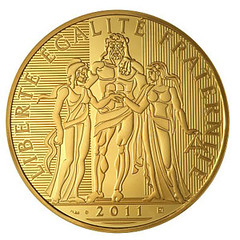
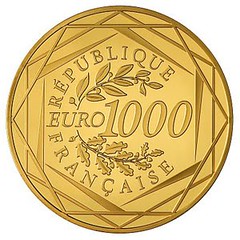
HOW MANY OF THE 100 GREATEST MODERN COINS
DO YOU OWN?
A Civil War Medal of Honor and Certificate
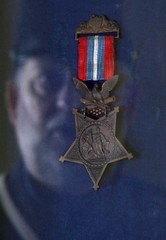 The shadow box containing an old tintype photo and medal hung on the wall of Bill Doan's family home for as long as he can remember.
The shadow box containing an old tintype photo and medal hung on the wall of Bill Doan's family home for as long as he can remember.
The soldier who posed for the photo and what he did to earn the medal were unknown to Doan, of South Milwaukee, until a few years ago. That's when Doan learned the medal wasn't just any decoration for valor, it was a Medal of Honor that had been conferred on his ancestor by Abraham Lincoln a few days before the president was assassinated.
That set Doan on a quest to learn more and ultimately join a Wisconsin chapter of Sons of Union Veterans of the Civil War.
"It kind of went from something hanging on the wall to maybe I should be doing something with this," said Doan, 58. "My belief is this is American history, and I think it should be shared."
Exactly 150 years ago Tuesday, the first shot of the Civil War was fired on Fort Sumter, S.C. Before the conflict ended four years later, more than 620,000 lives were lost and hundreds of thousands more carried the scars, both physical and emotional, of the war that almost broke the nation in two.
Doan's great-great-grandfather on his mother's side, Pvt. Franklin Johndro, earned the Medal of Honor while fighting with the 118th New York Volunteer Infantry. On Sept. 30, 1864, at the Battle of Chapin's Farm in Virginia, while armed with the relatively new Spencer repeating rifle, he single-handedly captured a large group of Confederate soldiers. Johndro attended a Medal of Honor ceremony with Lincoln on April 6, 1865.
Johndro survived the war. The logger from Vermont eventually settled in Michigan, where he died in 1901. He must have worn his Medal of Honor often, because the red, white and blue striped ribbon attached to the medal was given out by the government in 1896 to recipients to replace the original ribbon, Doan learned.
When Doan contacted the local chapter of Sons of Union Veterans of the Civil War, C.K. Pier Badger Camp No. 1, he was told to bring proof of an ancestor's Civil War service to become a member. Usually that means a copy of a muster roll or discharge papers. But when Doan showed up with Johndro's rare Medal of Honor, "their eyes bugged out," he said.
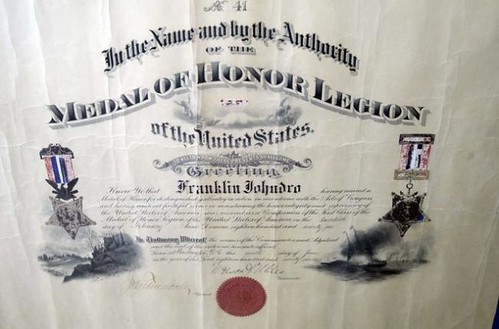
To read the complete article, see: Family heirloom is Medal of Honor conferred by Lincoln (www.jsonline.com/news/milwaukee/119671359.html)
Would A Halfway Counterfeiter Get Half The Prison Sentence?
The General Directorate of Criminal Evidence and Criminology at Dubai Police revealed that ‘partial forging' has become a novel method of counterfeiting currency.
Aqeel Al-Najjar, head of the Documents Inspection Department, explained that through this method, forgers divide the original currency into two halves, allowing them to use the same banknote twice.
Each halve is then pasted onto a fake note. Al-Najjar added that when the forgers use the currency in public, they hand it in using the side with the original note on top.
The police detected the first case of ‘partial forging' last year, and there have been several cases involving counterfeiting notes in the denominations of Dhs500, Dhs100, and Dhs20 in addition to notes of other currencies.
Al-Najjar said the department received 231 cases involving fake currency last year and 50 cases in the first quarter of this month.
To read the complete article, see: New method warned of in forging currency (gulftoday.ae/portal/3fd999f7-ceb5-48cc-b08f-9ccbfed1c7da.aspx)
Statue of Liberty Stamp Snafu
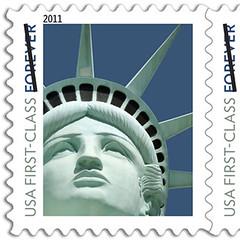 The huddled masses would be sorely disappointed – the Ellis Island greeter depicted on a new U.S. stamp is actually her Las Vegas replica.
The green lady proudly gazes into the distance on the USPS's newest stamp. But upon closer inspection: she's a faker. Even the Post Office didn't pick up on the printing error: a popular stamp magazine, Linn's Stamp News, brought the issue to light.
The huddled masses would be sorely disappointed – the Ellis Island greeter depicted on a new U.S. stamp is actually her Las Vegas replica.
The green lady proudly gazes into the distance on the USPS's newest stamp. But upon closer inspection: she's a faker. Even the Post Office didn't pick up on the printing error: a popular stamp magazine, Linn's Stamp News, brought the issue to light.
The New York icon shown on the stamp is actually located 2,500 miles away – at the New York-New York Casino in Vegas. Sin City's statue bears a number of differences to the original, not the least of which is her size: she stands at only half of the original's 151 feet. Though the full statue isn't visible on the stamp, the small visage printed on the postage features different hair and better-defined eyes than her New York sister.
The Postal Service reportedly chose the image from a photography service, unaware that it wasn't the real deal. But they're standing by their choice. "We still love the stamp design and would have selected this photograph anyway," said USPS spokesman Roy Betts.
New Yorkers may feel slighted by the mix-up, but Vegas is counting their winnings. A spokesman for MGM Resorts in Las Vegas said they were "honored" by the choice. Though perhaps the original message of the stamp has been lost in the misprint. After all, the only "tired" and "poor" folks this statue presides over are the money-drained gamblers of Sin City.
To read the complete article see:
Who's That Lady? New Stamp Features Wrong Statue of Liberty
(newsfeed.time.com/2011/04/15/whos-that-lady-new-
stamp-features-wrong-statue-of-liberty/)
FEATURED WEB SITE: CIVIL WAR TOKEN SOCIETY
This week's Featured Web Site is the Civil War Token Society.
Founded in 1967, the Civil War Token Society is a national, non-profit organization dedicated to help stimulate interest and research in the field of Civil War token collecting. Activities include publishing a journal (The Civil War Token Journal), conducting auctions, maintaining a reference library, providing an attribution service for a nominal fee, establishing State chapters and conducting regional meetings. There are currently over 1,000 active members.
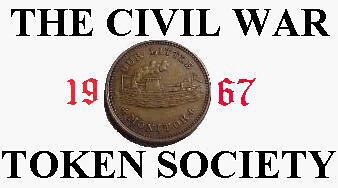
www.cwtsociety.com

